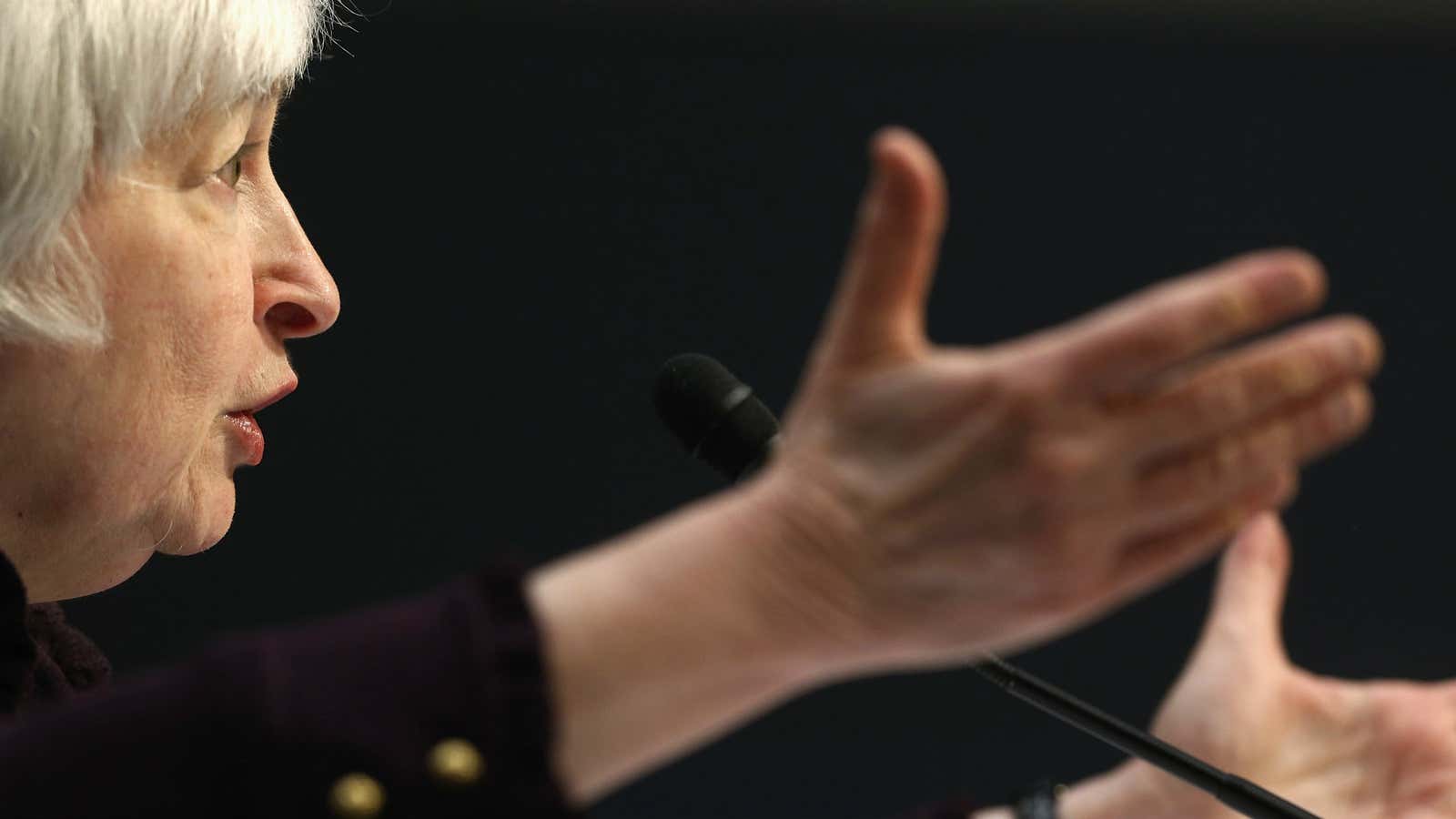Next week the Federal Reserve will, in all likelihood, raise its benchmark interest rate for the first time since 2006.
The market-implied odds put a roughly 81% chance on the Fed finally pulling the trigger. A separate Wall Street Journal poll (paywall) of economists from earlier this week has 97% of respondents in agreement that those sweet, sweet, long-awaited 25 basis points will finally arrive when the FOMC makes its monetary policy announcement on Wednesday. (That’s up from 92% last month.)
Then this week happened.
Suddenly, a rogue’s gallery of financial villains looms on the horizon. Oil price declines started to get a bit crazy. That spooked credit markets (paywall)—especially junk bonds, and especially energy-related junk bonds.
Meanwhile, more uncertainty seemed to emerge in China, which lowered the trading band on the yuan (again). Interpreted as a signal that the PBOC would allow the Chinese currency to weaken further, the move raised additional questions about the health of the world’s second largest economy.
A similar move back in August sent global markets reeling, and prompted the Fed to hold off on an expected rate hike then.
Needless to say, things are looking a little volatile again:
That puts the Fed between a rock and a hard place. Policymakers have to raise rates next week, lest they lose credibility. (“Indeed, 82% of economists surveyed said they thought the Fed’s credibility would be damaged if it didn’t raise rates next week, up from 65% who said so last month,” the Journal wrote).
On the other hand, the Fed wants to avoid the fate of the central banks in Sweden and New Zealand, which were forced to backtrack after trying to raise their own rates. A failed attempt to “liftoff”—to use the preferred market term of art for the Fed’s effort to take its first step away from near-zero rates—would also hurt the Fed’s credibility.
For now it seems that investors are still thinking the Fed raises its target for the Fed funds week at its meeting on Dec. 16.
But the market seems a lot less sure that any rate hikes will follow quickly. On Friday, the probability of a 0.25 percentage point rise in the Fed Funds rate at its meeting in March—which would bring it to 0.75%—fell to 35%, from the previous day’s 43%. Likewise, the probability of a hike to 0.75% in April fell to 37%, from 35%, according to data on the Fed Funds futures market compiled by the CME.
In other words, the even before the Fed’s hotly anticipated first rate hike happens, the markets are already starting to worry about the central bank’s next next move.
